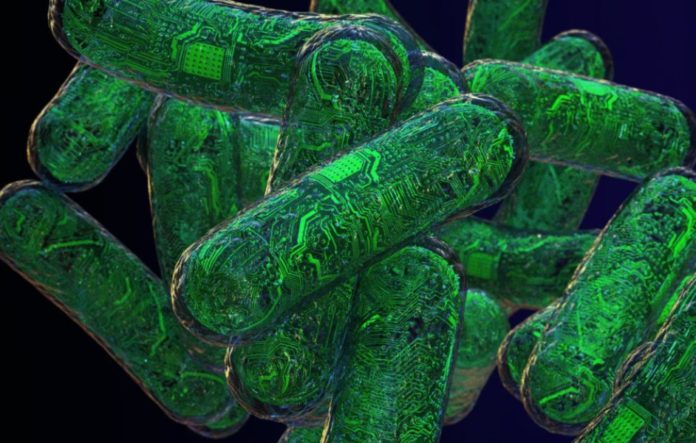Synthetic biology growing with rapid speed. It also opens were imagined a short time ago. In a new research, scientists showed how living mechanisms can be used to carry out computations in the manner of tiny robots or computers i.e., living computers.
To built these living computers– Scientists used RNA (ribonucleic acid) consist circuits that resemble conventional electronic circuits. The circuits were self-assembled in bacterial cells, allowing them to sense incoming messages and respond to them by producing a particular computational output.
Alex Green, a professor at ASU’s Biodesign Institute said, “We’re using very predictable and programmable RNA-RNA interactions to define what these circuits can do. That means we can use computer software to design RNA sequences that behave the way we want them to in a cell. It makes the design process a lot faster.”
Those special circuits called logic gates are then incorporated into living cells. There were also some small circuit switches that tripped when messages attach themselves to their complementary RNA sequences in the cellular circuit. It also activates the logic gate and producing the desired output.
The RNA-only approach to producing cellular nanodevices is a significant advance. Now, the necessary ribocomputing parts can be readily designed on a computer. The simple base-pairing properties of RNA’s four nucleotide letters (A, C, G, and U) ensure the predictable self-assembly and functioning of these parts within a living cell.
The approach was primarily described in 1994 by Leonard Adleman of the University of Southern California. Since then, rapid progress has advanced the field considerably, and recently, such molecular computing has been accomplished within living cells.
This technique allows researchers to develop RNA circuits that can be activated when a complementary RNA strand binds with an exposed RNA sequence in the designed circuit. With all the processing elements of the circuit, these living computers can perform many operations at the same time. Thus, it permits faster and more sophisticated computation while making efficient use of the limited resources of the cell.
Particularly, the RNA-based devices to regulate protein production can be applied to virtually any RNA input, ushering in a new generation of accurate, low-cost diagnostics for a broad range of diseases.
Green said, “Because we’re using RNA, a universal molecule of life, we know these interactions can also work in other cells, so our method provides a general strategy that could be ported to other organisms.”
Now, scientists are planning to use RNA toehold technology to produce so-called neural networks within living cells. They are also hoping for inducing cells to communicate with one another via programmable molecular signals, forming a truly interactive, brain-like network.
